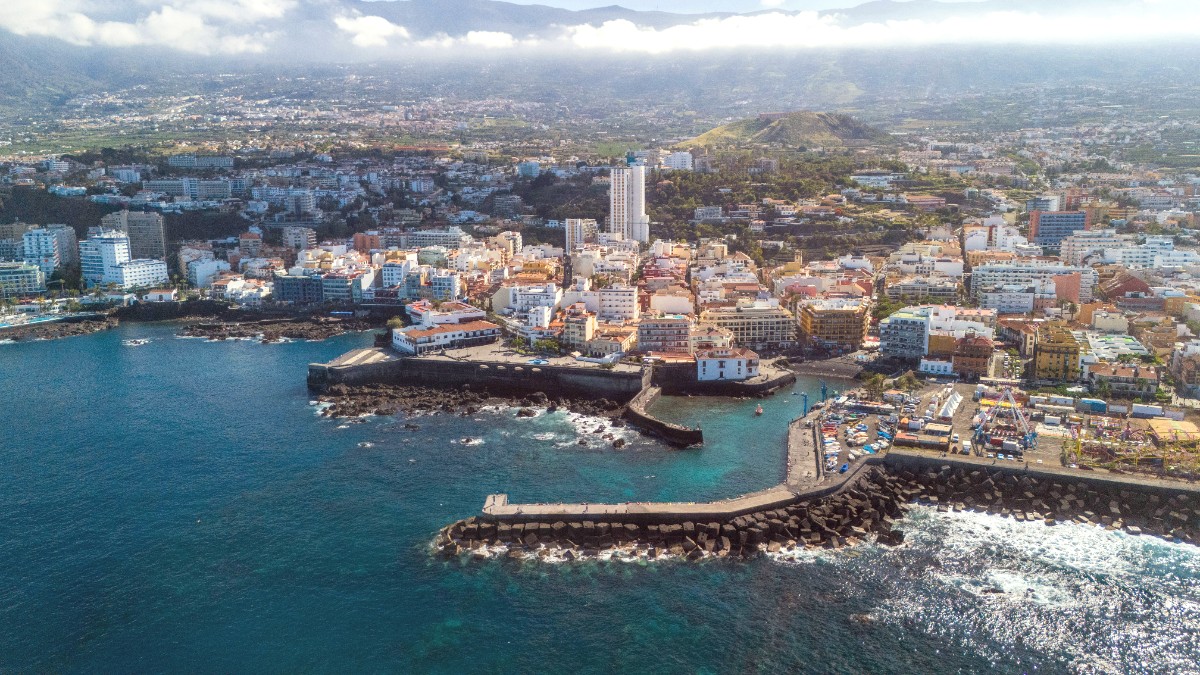
Tenerife, Canary Islands
This city has long welcomed visitors. Its mild year-round climate has drawn people for generations. You find a diverse range of experiences, from quiet strolls through botanical wonders to lively evenings in the main squares. The city acts as an ideal base for exploring the diverse landscapes of Tenerife, from the high peaks of Teide National Park to the ancient forests of Anaga.
Puerto de la Cruz a destination rich in natural beauty and cultural depth. It a relaxed yet engaging atmosphere, perfect for those seeking more than just a beach holiday.
Prepare for warm hospitality and a chance to experience the authentic spirit of the Canary Islands.
Puerto de la Cruz sits on the northern coastline of Tenerife, the largest and most populated island in the Canary Islands archipelago. This location places it roughly 30 kilometers (19 miles) west-southwest of Santa Cruz de Tenerife, the island's capital. Its position defines much of the city's character and climate.
The city rests at the base of the Orotava Valley, a fertile expanse with banana plantations stretching towards the mountains. This green, agricultural backdrop contrasts with more arid, volcanic landscapes elsewhere in Tenerife. The valley also offers views of the majestic Teide volcano, Spain's highest peak, adding a dramatic element to the city's skyline.
The valley influences the local microclimate, contributing to the "eternal spring" weather.
The northern coast experiences more cloud cover, often called "panza de burro" (donkey's belly), providing a greener, more humid environment.
Coordinates place it within the subtropical zone, creating a stable and pleasant climate.
Ocean breezes often temper the warmth, making the coastal location pleasant.
Volcanic soil allows agriculture to thrive, including banana plantations and vineyards.
The northern coast of Tenerife, home to Puerto de la Cruz, differs notably from the southern coast. Northern areas typically experience more cloud cover, contributing to a greener, more humid environment compared to the consistently sunny and dry south. This distinction means Puerto de la Cruz offers a different kind of Tenerife experience.
This interplay of ocean, valley, and mountain makes Puerto de la Cruz a geographically distinct and attractive place to visit. The terrain around the city presents varied opportunities for exploration, from coastal walks to higher-altitude trails in the nearby Orotava Valley.
The city's growth has historically tied to its port, which supported trade from this rich agricultural region, complementing its tourism focus.
The city's precise coordinates, approximately 28.4167° N latitude and 16.5500° W longitude, place it within the subtropical zone. This geographical position, combined with the cooling influence of the Atlantic Ocean and the protective barrier of Mount Teide, creates a remarkably stable and pleasant climate throughout the year.
Puerto de la Cruz is a distinguished place in the history of Tenerife and the Canary Islands. Its journey from a small fishing village to a celebrated tourist destination reflects the evolving appeal of the islands. Initially, in the 17th century, the settlement served as a humble fishing hamlet.
Its natural harbor was quickly recognized for its potential, leading to its development into a significant port. This port served as the main gateway for the rich agricultural produce of the Orotava Valley, especially wine, which shipped to markets across Europe and the Americas.
The 19th century saw its mild climate gain recognition among European aristocrats and intellectuals seeking health and wellness retreats.
Puerto de la Cruz holds the distinction of being the first true tourist resort in the Canary Islands, welcoming visitors long before mass tourism.
Remnants of its past, like the 17th-century fishing harbor and San Felipe Castle, remain visible.
This early start fostered a tradition of hospitality and a more organic integration of tourism with local life. The city maintains a strong connection to its past, evident in its architecture and cultural landmarks.
Northern coast of Tenerife, Spain, at the base of the Orotava Valley.
Approximately 30,000 residents, maintaining a local feel.
Tourism and agriculture (banana cultivation) are significant economic activities.
A blend of ocean views, green valleys, and volcanic landscapes defines the city's surroundings.
The city's history as a port and early tourist destination reflects in its charm and landmarks.
Modern comforts and tourist amenities complement the natural and cultural attractions.